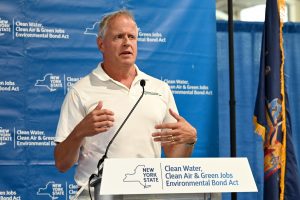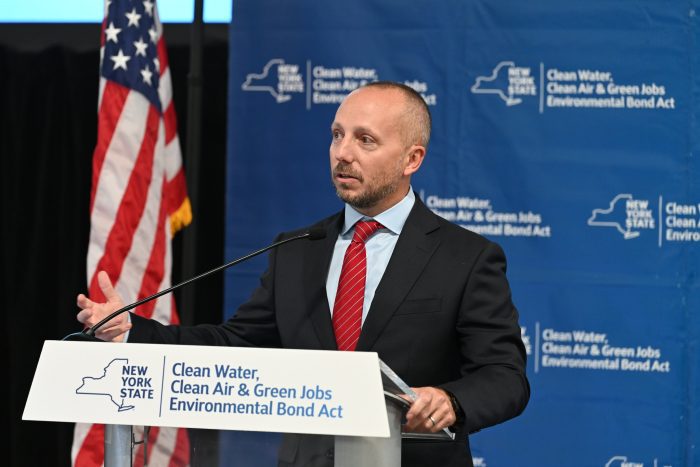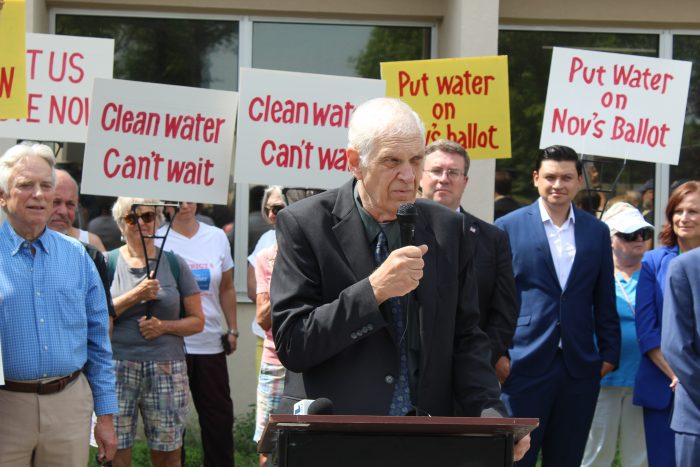New York State officials capped off a statewide listening tour on Thursday, Aug. 24, at Suffolk County Community College to inform the public on expenditures related to the $4.2 billion New York State Clean Water, Clean Air and Green Jobs Environmental Bond Act, passed last year.
Voters statewide passed the Environmental Bond Act via public referendum by 68-32%. Suffolk County residents had upvoted the ballot measure 64-36%.
Community members and public officials from the state to the local levels attended Thursday’s event as senior NYS administrators outlined their plans for dispersing the funds.
Basil Seggos, commissioner of the New York State Department of Environmental Conservation, offered recent historical context surrounding the bond act money.
The listening tour concludes “amid one of the most impactful summers ever when it comes to climate change,” he said. “I’m old enough in this job to remember when we had an incident or two a season. Now we’re seeing incredible impacts.”
From Canadian wildfire smoke impairing local air quality to rising temperatures to heightened and more intense precipitation events, Seggos maintained the pressing need to use bond act funding to remediate these challenges.

The bond act funds will focus on four primary categories: climate change mitigation, restoration and fund risk, open space preservation and water quality improvement.
While state agencies are still refining eligibility guidelines, Seggos said the state government aims to direct at least 35%, with a goal of 40% of the funds, to disadvantaged communities.
However, “every community in New York state is eligible” for bond act subsidization, he added.
Suzanna Randall, chief resilience officer at NYSDEC, noted that a significant portion of the bond act funds would support restoration and flood risk, marsh restoration, municipal stormwater infrastructure and other related water infrastructure improvements.
New York State Parks Commissioner Erik Kulleseid outlined how bond act funding would help support and promote Long Island’s parkland and open space. Funding areas include open space conservation, farmland protection and easements, fish hatcheries and other projects.
Public feedback needed‘Please, please, please use the survey to give us your ideas, to give us your thoughts on how these dollars should be appropriated.’
— Suzanna Randall
Throughout the event, Randall stressed the need for public input on projects that may qualify for bond act funds. “Please, please, please use the survey to give us your ideas, to give us your thoughts on how these dollars should be appropriated,” she said.
Kulleseid also emphasized the importance of public feedback, noting the limited timeframe to gather public comment as the survey expires on Wednesday, Sept. 13.
“We have an online survey tool that will allow you to share ideas and information about projects you may have or the types of projects that we should fund in general,” the NYS park commissioner said. “It’s not an application or a request for proposal but a way to help us learn about the universal projects local governments, community organizations and the public” may require.
To complete the survey of initial project ideas, scan the QR code below. To learn more about the Environmental Bond Act, please visit www.ny.gov/bondact.







